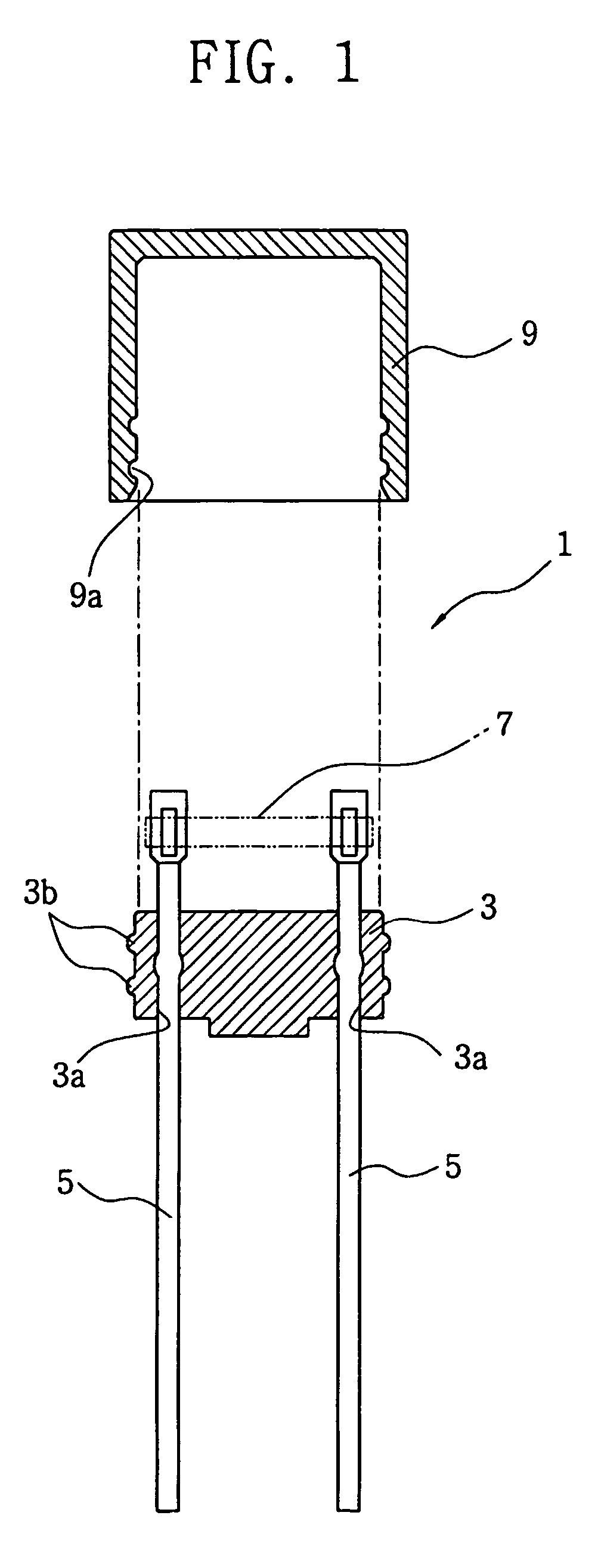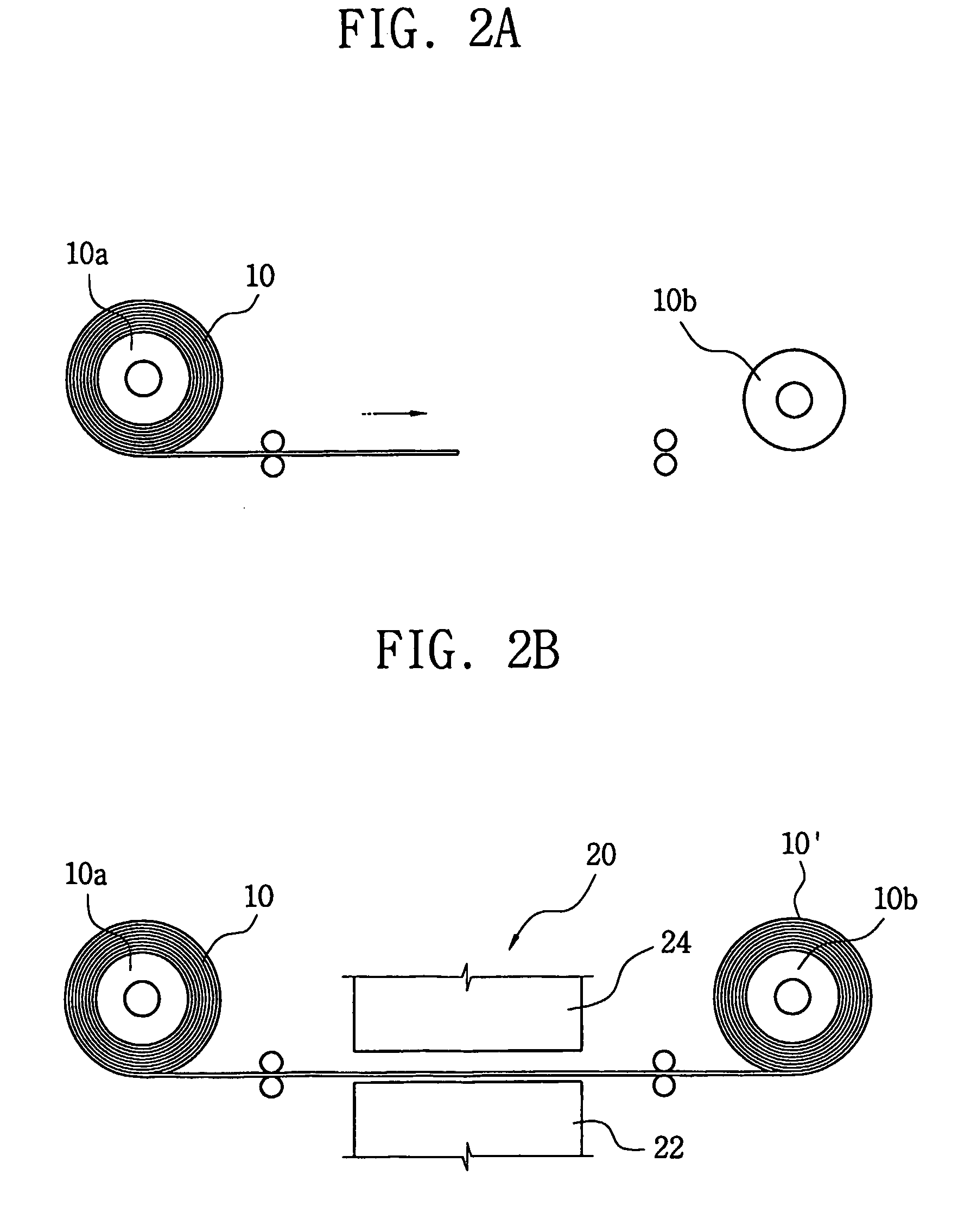Method of producing fuses
a technology of fuses and fuses, applied in the field of fuses production, can solve the problems of increasing the number of defective fuses, reducing productivity, and becoming difficult and troublesome to produce fuses, so as to prevent flexural deformation of lead wires and minimize the generation of bad quality fuses
- Summary
- Abstract
- Description
- Claims
- Application Information
AI Technical Summary
Benefits of technology
Problems solved by technology
Method used
Image
Examples
Embodiment Construction
[0023] A preferred method for producing fuses according to the present invention will now be described with reference to the accompanying drawings. In the present specification, the term “blank” denotes a half-finished product obtained by pressing a metal sheet into a plurality of pairs of lead conductors.
[0024]FIGS. 2A to 2H show a series of steps employed in the method for producing fuses according to a preferred embodiment of the present invention, and FIGS. 3A to 3E show configuration of metal sheets formed at the respective step of the inventive method.
[0025] The fuse production method according to the present invention makes use of a metal sheet 10, which may be a rolled continuous strip as shown in FIG. 2A. The metal sheet 10 is intermittently unwound from a supply reel 10a and transferred to a take-up reel 10b. One example of the metal sheet 10 may be a copper sheet. The width and length of the metal sheet 10 are appropriately determined depending upon the size of a fuse t...
PUM
| Property | Measurement | Unit |
|---|---|---|
| length | aaaaa | aaaaa |
| electric current | aaaaa | aaaaa |
| structures | aaaaa | aaaaa |
Abstract
Description
Claims
Application Information
 Login to View More
Login to View More - R&D
- Intellectual Property
- Life Sciences
- Materials
- Tech Scout
- Unparalleled Data Quality
- Higher Quality Content
- 60% Fewer Hallucinations
Browse by: Latest US Patents, China's latest patents, Technical Efficacy Thesaurus, Application Domain, Technology Topic, Popular Technical Reports.
© 2025 PatSnap. All rights reserved.Legal|Privacy policy|Modern Slavery Act Transparency Statement|Sitemap|About US| Contact US: help@patsnap.com



